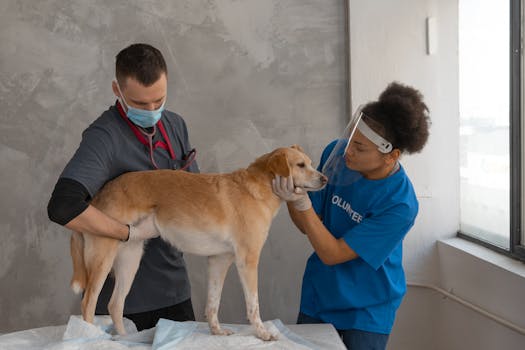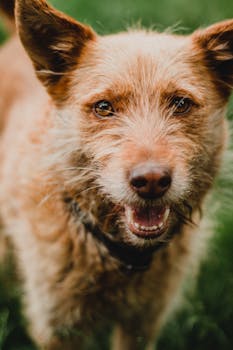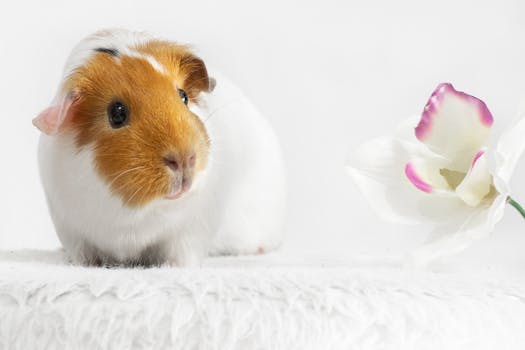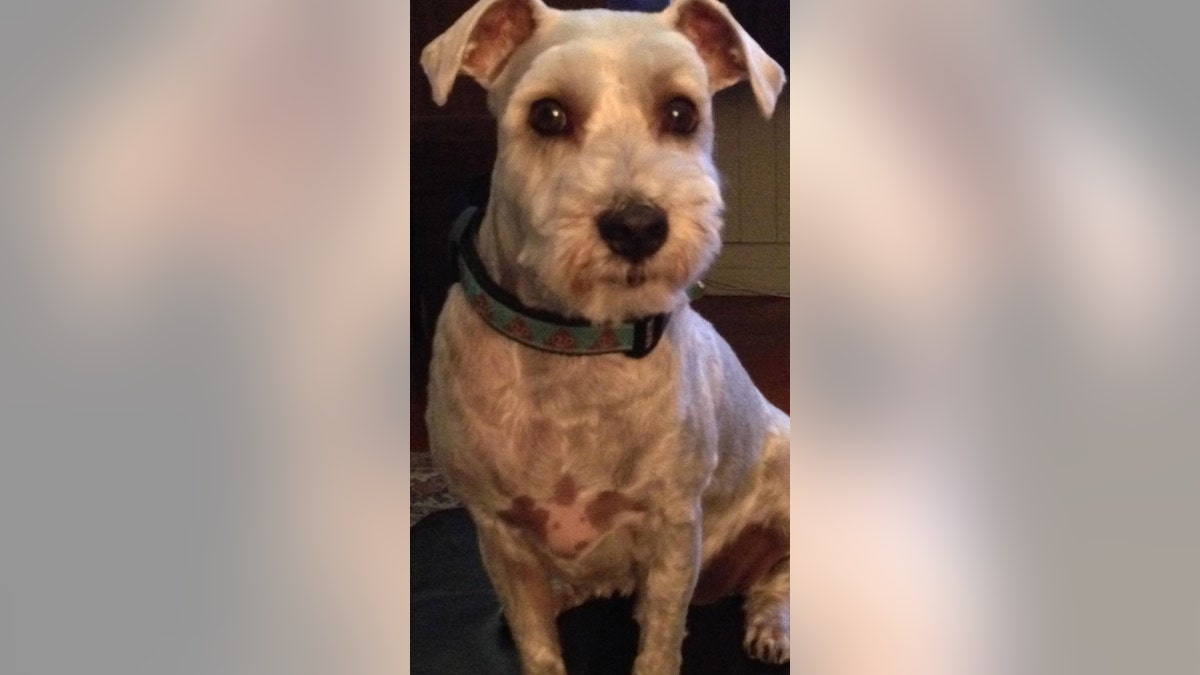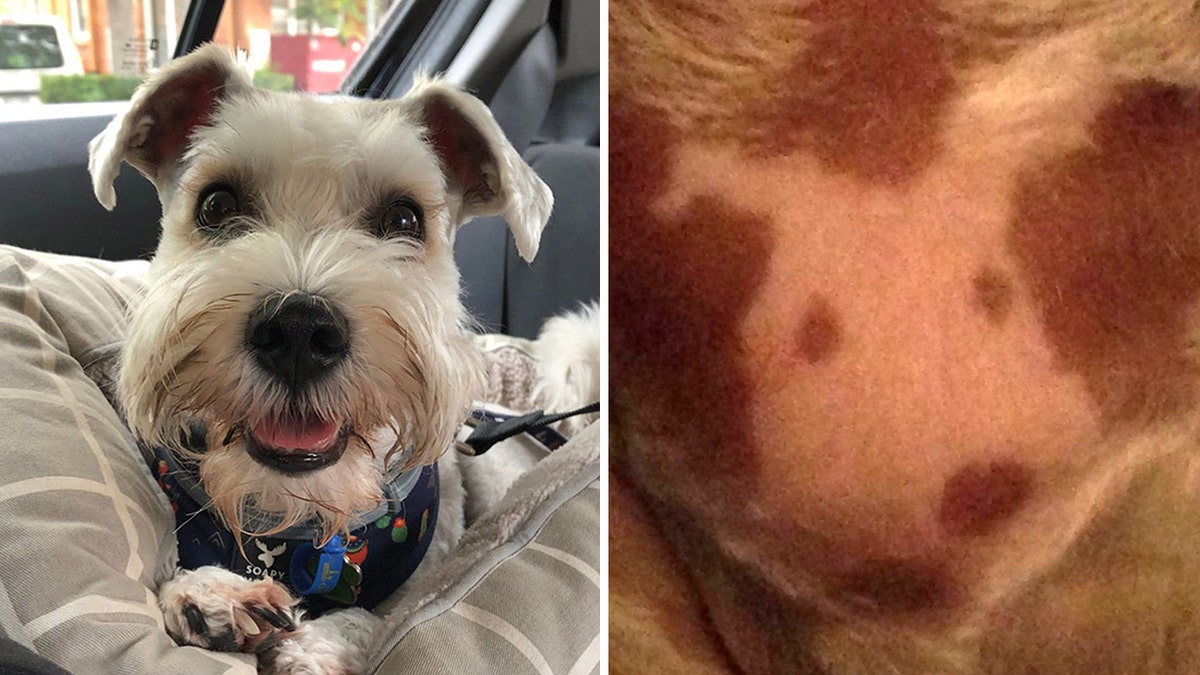Understanding The Importance Of Containment
Why A DIY Electric Dog Fence Is Essential

Understanding the importance of containment, and why a DIY electric dog fence is essential when it comes to pet ownership. Ensuring the safety and security of your furry friend is a top priority. Dogs are naturally curious creatures with a penchant for exploration, but this can sometimes lead them into dangerous situations such as wandering into busy streets or encountering aggressive wildlife. As a responsible dog owner, it's crucial to establish boundaries to prevent such incidents from occurring.
This is where a DIY electric dog fence comes into play. Traditional fencing methods such as wooden or chainlink fences can be costly to install and may not always provide adequate containment for your pet. They can also obstruct your view and detract from the aesthetics of your property.
In contrast, a DIY electric dog fence offers a more affordable, flexible, and effective solution for keeping your pup safe within designated areas. One of the primary reasons why a DIY electric dog fence is essential is its ability to provide a secure, yet unobtrusive barrier for your pet. Unlike physical fences, which can be climbed over or dug under, an electric dog fence relies on a buried wire and a receiver collar, worn by your dog, to deliver a harmless static correction when they approach the boundary. This gentle reminder serves as a deterrent without causing any harm to your furry friend, effectively discouraging them from crossing the established perimeter.
Moreover, a diy electric dog fence allows you to customize the boundaries according to your specific needs and preferences, whether you want to enclose your entire yard, protect a garden or flowerbed, or keep your dog away from certain hazards, such as swimming pools or flower beds. You have the flexibility to create designated zones tailored to your unique requirements. This level of customization ensures that your dog stays safe, while still enjoying the freedom to roam within defined areas.
Another benefit of a DIY electric dog fence is its ease of installation and maintenance. Unlike traditional fences, which may require professional installation and ongoing repairs, an electric dog fence can typically be installed in a single weekend with basic tools and DIY know-how once installed. The system requires minimal maintenance, such as periodically checking the boundary line for any breaks or damage and replacing the batteries in the receiver collar as needed.
In addition to providing physical containment, a diy electric dog fence can also help address behavioral issues such as excessive barking digging or jumping by establishing clear boundaries and reinforcing them with static correction, you can effectively teach your dog to respect property lines and curb unwanted behaviors With consistent training and positive reinforcement, your dog will learn to associate the boundary with the correction and will be less likely to test its limits over time. Furthermore, a diy electric dog fence offers peace of mind for pet owners, knowing that their furry companions are safe and secure within the designated area, whether you're at work, running errands or relaxing in your backyard. You can rest assured that your dog is protected from potential dangers and unable to wander off unsupervised.
This sense of security allows you to enjoy quality time with your pet without constantly worrying about their safety. In conclusion, a DIY electric dog fence is an essential investment for any dog owner, looking to provide their pet with a safe and secure environment, to roam freely from its ability to offer customizable boundaries and address behavioral issues to its ease of installation and maintenance. An electric dog fence offers numerous benefits that traditional fencing methods simply can't match by understanding the importance of containment and taking proactive steps to establish boundaries.
You can ensure the safety and well-being of your beloved canine companion for years to come, by assessing your property, and choosing the right layout for your diy electric dog fence, assessing your property, choosing the right layout for your diy electric dog fence. Before embarking on the installation of a DIY electric dog fence, it's crucial to assess your property thoroughly to determine the most suitable layout for containment. Every property is unique with its own set of challenges and considerations. So taking the time to carefully evaluate your surroundings, will ensure the success and effectiveness of your electric dog fence system, start by surveying your property boundaries and identifying any potential obstacles or hazards that may impact the layout of your electric dog fence.
This includes existing structures such as buildings, trees, shrubs, and landscaping features, as well as natural barriers like slopes, ditches, and bodies of water. Take note of any areas that you want to designate as off-limits to your dog, such as gardens, flowerbeds, or swimming pools. Next, consider the size and shape of your property and determine how much coverage you'll need for effective containment. Keep in mind that the boundary of your electric dog fence should encompass the entire area that you want to keep your dog within, allowing them ample space to roam and explore safely taking into account any future expansion plans or changes to your property layout.
That may affect the placement of your electric dog fence. Once you have a clear understanding of your property's layout and boundaries, it's time to plan the placement of your DIY electric dog fence system. This involves mapping out the perimeter of your containment area and determining the location of the boundary wire transmitter and receiver collar. Here are some key factors to consider when planning your electric dog fence layout boundary placement, the boundary wire should be installed along the perimeter of your containment area, creating a continuous loop that encloses the designated space.
It's important to place the boundary wire far enough away from any existing physical barriers, such as fences or walls, to prevent interference with the signal additionally consider the height of the boundary wire to ensure that it's positioned at a level where your dog's receiver collar can effectively Detect the signal transition zones if your property includes areas where your dog is allowed to cross the boundary line such as driveways or pathways you'll need to create transition zones to facilitate safe passage. This involves burying the boundary wire underground or installing it above ground using boundary flags or markers to indicate the boundary line. Transition zones should be clearly marked to help your dog understand where it's safe to cross the boundary correction zones in areas where your dog is not allowed to cross the boundary line such as flowerbeds or swimming pools. You may need to create correction zones to deter them from approaching the boundary.
This involves adjusting the settings on your dog's receiver collar to deliver a static correction when they get too close to the boundary line. Correction zones should be clearly defined and consistent to effectively reinforce the boundaries, avoiding interference, be mindful of potential sources of interference that may affect the performance of your electric dog fence system, such as metal objects, electronic devices or power lines avoid installing the boundary wire near these Sources of interference to prevent signal disruption and ensure reliable containment, testing and adjusting once you've installed your diy electric dog fence system, thoroughly test the boundary line and receiver collar to ensure proper functionality, walk your dog around the perimeter, while monitoring their reaction to the static correction And make any necessary adjustments to the placement or settings to optimize performance by carefully assessing your property and planning the layout of your diy electric dog fence system, you can create a safe and effective containment solution for your furry friend, taking the time to consider factors such As property boundaries, obstacles and transition zones will help ensure the success and longevity of your electric dog fence, providing you with peace of mind, knowing that your pet is protected and secure within their designated area, selecting the right components, essential tools and materials for installation, selecting the Right components, essential tools and materials for installation when it comes to installing a diy electric dog fence having the right tools and materials is essential for ensuring a successful and effective containment system from the boundary wire to the receiver collar. Each component plays a crucial role in creating a safe and secure environment for your furry friend in this chapter, we'll explore the essential tools and materials you'll need for installing a diy electric dog fence and provide tips for selecting the best options for your specific needs.
Boundary wire, the boundary wire, is the backbone of your electric dog fence system, defining the perimeter of your containment area. It's typically made of durable, insulated, copper or aluminum wire. That's designed to withstand outdoor conditions and resist corrosion when selecting a boundary wire.
Consider factors such as length gauge and quality opt for a wire. That's long enough to encompass your entire containment area and choose a gauge: that's appropriate for your property size and terrain thicker wires. Lower gauge numbers are better suited for larger properties or areas with dense vegetation, as they provide a stronger signal and better containment transmitter. The transmitter is the control center of your electric dog fence system responsible for sending signals through the boundary wire and communicating with the receiver collar worn by your dog when choosing a transmitter look for features such as adjustable signal, strength, surge protection, and compatibility with multiple receiver.
Collars, if you have more than one dog, consider the size of your property and the layout of your containment area to determine the appropriate transmitter range and power output for optimal coverage and performance receiver collar. The receiver collar is worn by your dog and is equipped with sensors that detect the signal emitted by the boundary wire. When your dog approaches the boundary line, the collar delivers a harmless static correction to deter them from crossing when selecting a receiver collar.
Consider factors such as size, weight and compatibility with your dog's breed and temperament look for features such as adjustable correction levels, battery life, and waterproof construction for durability and reliability in various weather conditions, boundary flags, boundary flags are used to visually mark the perimeter of your containment Area during the training phase, they serve as a visual cue for your dog to recognize the boundaries and help reinforce the training process when selecting boundary flags choose ones that are brightly colored and easy to see even from a distance place. The flags along the boundary line at regular intervals, to provide clear guidance for your dog and facilitate effective training twisted wire twisted wire, is used to create transition zones and connect the boundary wire to the transmitter. It's typically a shorter length of wire. That's twisted together to cancel out the signal and allow your dog to safely cross the boundary line without receiving a correction when selecting twisted wire choose a gauge that matches the boundary wire and ensure that it's insulated to prevent signal interference and maintain signal integrity, digging tool.
A digging tool such as a trenching shovel or edging tool, is essential for burying the boundary wire underground along the perimeter of your containment area. When selecting a digging tool. Consider factors such as blade width handle length and durability, opt for a tool, that's comfortable to use and capable of cutting through soil grass and roots to create a clean and even trench for burying the wire wire, splices and connectors wire. Splices and connectors are used to join sections of boundary wire together and connect the wire to the transmitter and receiver collar when selecting wire, splices and connectors choose ones that are designed specifically for use with electric dog fence systems and provide a secure, waterproof connection avoid using Standard wire, connectors or electrical tape, as they may not provide a reliable connection and could result in signal, loss or system failure, grounding rod.
A grounding rod is used to ground the transmitter and dissipate any stray signals or electrical interference when selecting a grounding rod choose one. That's made of durable corrosionresistant material such as copper or galvanized steel, ensure that the grounding rod is installed according to the manufacturer's instructions and placed in a location where it can effectively disperse electrical currents into the ground by selecting the right tools and materials for your diy Electric dog fence installation you can ensure a smooth and successful process from start to finish, consider factors such as property, size, terrain and pet temperament when choosing components and invest in highquality reliable products to ensure the safety and security of your furry friend. With the proper tools and materials at your disposal, you can create a safe and effective containment system that provides peace of mind for you and freedom for your pet planning. Your installation, mapping out boundaries and zones planning your installation, mapping out boundaries and zones before diving into the installation process of your diy electric dog fence.
It's essential to take the time to carefully plan and map out the boundaries and zones of your containment area. Proper planning will ensure that your electric dog fence system is installed effectively and efficiently, providing your pet with a safe and secure environment to roam. Here's a stepbystep guide to help you plan your installation, assess your property begin by surveying your property and identifying the boundaries of the area. You want to enclose with your electric dog fence, take note of any obstacles or potential hazards, such as trees, shrubs flower beds and existing structures that may impact the layout of your system.
Define containment area, determine the size and shape of your containment area. Based on your pet's needs and the layout of your property consider factors such as the size of your dog, their activity, level and any specific areas you want to protect or exclude, such as gardens or swimming pools, create a map using graph paper or a digital mapping Tool create a map of your property and mark the boundaries of your containment area, be sure to include any existing structures, landmarks and potential obstacles on your map to help you plan the placement of your electric dog fence components: choose boundary layout, decide on the layout of Your boundary wire, which will define the perimeter of your containment area, you can choose from a variety of configurations such as a single loop around the entire perimeter, multiple loops to create separate containment zones or custom shapes to accommodate unique property features. Plan transition zones identify areas where your dog will need to cross the boundary line, such as driveways pathways or gates and plan transition zones.
Accordingly, transition zones help your dog understand where it's safe to cross the boundary and can be created using buried, wire or aboveground markers designate. Correction zones determine any areas within your containment area where you want to discourage your dog from entering, such as flower beds, vegetable gardens or sensitive landscaping features. These areas can be designated as correction zones where your dog's receiver collar will deliver a static correction. If they approach too closely consider expansion anticipate any future changes to your property layout or containment, needs and plan for potential expansion of your electric dog fence system, leave room for flexibility and scalability to accommodate future additions or adjustments to your containment area test.
Your plan, once you've mapped out your boundaries and zones, take some time to walk the perimeter of your proposed containment area and visualize. How your electric dog fence system will be installed, make any necessary adjustments to your plan to ensure optimal coverage and functionality by carefully planning. Your installation and mapping out the boundaries and zones of your containment area. You can ensure a successful and effective diy electric dog fence system.
Taking the time to assess your property, define your containment area and plan. The layout of your system will help you install your electric dog fence with confidence providing your pet with the safety and security they need to thrive. Stepbystep installation guide, building your diy electric dog fence from start to finish: stepbystep installation guide, building your diy electric dog fence from start to finish, installing a diy electric dog fence may seem like a daunting task, but with the right tools, materials and guidance, it can be A straightforward and rewarding project in this stepbystep installation guide, we'll walk you through the process of building your electric dog fence from start to finish, ensuring that your pet is protected and your property is secure, gather your materials before you begin make sure you have all the Necessary materials and tools on hand, you'll need a transmitter, boundary wire, receiver, collar boundary flags or markers wire, connectors, a trenching tool or shovel, and a voltmeter for testing the system plan. Your layout refer to the mapping and planning you did in the previous chapter to determine the layout of your electric dog fence, decide on the placement of your boundary, wire transition zones and correction zones, taking into account any obstacles or hazards on your property.
Install the transmitter. Begin by installing the transmitter in a dry, protected location indoors, such as a garage or utility room, mount the transmitter on a wall or place it on a stable surface, ensuring that it's easily accessible and has adequate ventilation, lay the boundary wire using a trenching tool or Shovel dig a narrow trench along the perimeter of your containment area to bury the boundary wire, the depth of the trench will depend on your specific system's requirements, but it's typically recommended to bury the wire 13 inches underground connect the boundary wire once the boundary wire is In place, connect it to the transmitter using wire, connectors or splice kits, follow the manufacturer's instructions carefully to ensure proper connection and insulation of the wires test. The system before burying the boundary wire completely it's essential to test the system to ensure that it's functioning correctly use a voltmeter to check the signal, strength along the boundary line and adjust the transmitter settings as needed to achieve optimal performance, install boundary flags. Once the system has been tested and adjusted place, boundary flags or markers along the boundary line, to provide a visual cue for your dog.
These flags will help your pet understand the boundaries of their containment area and can be gradually removed as they learn the boundaries fit. The receiver collar introduce your dog to the receiver collar and ensure that it fits comfortably and securely around their neck, follow the manufacturer's instructions for adjusting the collar size and activating the receiver to detect the boundary signal train. Your dog begin training your dog to understand the boundaries of their containment area.
Using positive reinforcement techniques, walk them around the perimeter on a leash, guiding them away from the boundary line and rewarding them for staying within the designated area, monitor and adjust. After your electric dog fence system is installed and your pet has been trained, it's essential to monitor their behavior and make any necessary adjustments to the system or training techniques, regularly check the boundary line for breaks or damage and retest the system periodically to ensure continued effectiveness By following this stepbystep installation guide, you can build your diy electric dog fence system, with confidence providing your pet with a safe and secure environment to enjoy with proper planning, installation and training. You can enjoy peace of mind, knowing that your furry friend is protected and your property is secure, testing and adjusting ensuring proper functionality and effectiveness, testing and adjusting ensuring proper functionality and effectiveness. Once you've completed the installation of your diy electric dog fence system, the next crucial step is testing and adjusting to ensure that it's functioning correctly and effectively.
Proper testing and adjustment are essential for providing your pet with reliable containment and ensuring their safety and security within the designated boundaries. In this chapter, we'll discuss the importance of testing your electric dog fence system and provide guidance on how to adjust it for optimal performance. Why testing is important testing your diy electric dog fence system is critical for several reasons. Verification of installation testing allows you to verify that the boundary wire is installed correctly and that the transmitter is emitting a consistent signal along the perimeter of your containment area.
This ensures that there are no breaks or discontinuities in the boundary line that could compromise the effectiveness of the system. Confirmation of signal, strength, testing, helps. You confirm that the signal strength of the transmitter is sufficient to activate the receiver collar worn by your dog. This ensures that your pet will receive a timely and effective correction if they approach the boundary line, deterring them from crossing into restricted areas.
Identification of interference testing allows you to identify and address any sources of interference that may affect the performance of your electric dog fence system. Common sources of interference include metal objects, electronic devices and power lines which can disrupt the signal and reduce the effectiveness of the system. How to test your electric dog fence system follow these steps to test your diy.
Electric dog fence system use a voltmeter start by using a voltmeter to measure the strength of the signal along the boundary line place, one probe of the voltmeter on the boundary wire near the transmitter and the other probe at various points along the perimeter of your containment Area the voltmeter should register a consistent signal strength throughout the boundary line, check receiver collar functionality next test the receiver collar worn by your dog, to ensure that it's detecting the boundary signal effectively walk your dog around the perimeter of your containment area, while monitoring their reaction To the boundary signal, the collar should emit a warning tone followed by a static correction. If your dog approaches the boundary line, verify correction intensity, verify that the static correction delivered by the receiver collar is sufficient to deter your dog from crossing the boundary line, if necessary. Adjust the correction intensity settings on the collar to ensure that it's effective without causing discomfort or distress to your pet address.
Any issues, if you encounter any issues during testing such as weak signal strength or inconsistent correction troubleshoot and address them promptly check for breaks or damage in the boundary wire, adjust the transmitter settings and remove any sources of interference to improve system performance. Retest periodically periodically retest your electric dog fence system to ensure continued functionality and effectiveness. Regular testing allows you to identify and address any issues before they escalate, ensuring that your pet remains safely contained within the designated boundaries.
Adjusting your electric dog fence system, based on the results of your testing, you may need to make adjustments to your diy electric dog fence system to optimize its performance. Here are some common adjustments. You may need to make transmitter settings adjust the settings on the transmitter to increase or decrease the signal.
Strength as needed to achieve optimal coverage and effectiveness refer to the manufacturer's instructions for guidance on adjusting the transmitter settings boundary wire placement. If you encounter weak signal, strength or inconsistent correction during testing, consider adjusting the placement of the boundary wire to ensure a more reliable signal along the perimeter of your containment area. Avoid areas with potential sources of interference such as metal objects or electronic devices receiver collar fit ensure that the receiver collar worn by your dog, fits comfortably and securely around their neck. Adjust the collar size as needed to ensure a proper fit and consistent contact with your pet's skin for reliable detection of the boundary Signal correction intensity: if your dog is not responding appropriately to the static correction delivered by the receiver collar, adjust the correction intensity settings to a level that is effective without causing undue stress or discomfort to your pet, gradually increase the intensity until you achieve the desired response. From your dog training reinforcement in addition to adjusting your electric dog fence system, reinforce your pet's training to ensure that they understand the boundaries of their containment area and respond appropriately to the warning tone and static correction delivered by the receiver collar. Consistent and positive reinforcement is key to successful containment by testing and adjusting your diy electric dog fence system regularly. You can ensure proper functionality and effectiveness, providing your pet with a safe and secure environment to roam freely within the designated boundaries.
Regular testing allows you to identify and address any issues promptly, ensuring the safety and security of your furry friend training, your dog, introducing your pet to the new boundaries; training, your dog, introducing your pet to the new boundaries, introducing your dog to the boundaries of your diy Electric dog fence is a crucial step in ensuring their safety and understanding of the containment system. Proper training not only teaches your dog to respect the boundaries, but also strengthens the bond between you and your furry companion in this chapter, we'll discuss effective training techniques to help your dog adjust to the new boundaries of their containment area, start with leash training. Before allowing your dog to roam freely within the containment area, begin by leash training them around, the perimeter use a standard leash or a long training leash to guide your dog along the boundary line, providing gentle guidance and direction as needed. Walk your dog around the perimeter.
Multiple times gradually increasing the distance and reinforcing positive behavior with praise and treats introduce boundary flags. As you walk your dog around the perimeter, introduce them to the boundary flags or markers that you've placed along the boundary line. These flags serve as visual cues to help your dog understand the boundaries of their containment area, encourage your dog to approach the flags and explore the area while reinforcing positive behavior with praise and treats use positive reinforcement. Positive reinforcement is a key component of effective training with a diy electric dog fence whenever your dog approaches the boundary line but stops short of crossing, it immediately praise and reward them with treats or verbal praise.
This helps your dog associate, staying within the boundaries with positive experiences and encourages them to respect the perimeter, teach boundary awareness to help your dog develop a clear understanding of the boundaries of their containment area practice. Boundary awareness exercises regularly use a combination of verbal cues hand, signals and treats to reinforce the concept of staying within the designated boundaries practice. These exercises both on and offleash, to gradually build your dog's confidence and understanding incorporate distractions, as your dog becomes more comfortable with the boundaries of their containment area, gradually introduce distractions to test their obedience and focus use.
Toys treats or other stimuli to tempt your dog to approach the boundary line and observe their response, reinforce positive behavior with praise and rewards and gently redirect your dog's attention away from the boundary if they show signs of crossing it monitor progress throughout the training process. Closely. Monitor your dog's behavior and progress to identify any areas that may require additional attention or reinforcement, observe how your dog responds to the boundary flags, correction, signals and distractions and adjust your training approach accordingly. Consistent monitoring allows you to address any issues promptly and ensure that your dog is adapting to the containment system effectively gradually increase freedom.
Once your dog demonstrates a clear understanding of the boundaries and consistently responds to the receiver, collar's warning tone and static correction. You can gradually increase their freedom within the containment area, start by allowing supervised off leash time in the enclosed space gradually increasing the duration, as your dog demonstrates. Reliable obedience and boundary awareness be patient and consistent training. Your dog to respect the boundaries of their diy electric dog fence may take time and patience, so it's essential to remain consistent and patient throughout the process, use positive reinforcement, consistency and clear communication to reinforce the desired behavior and correct any unwanted behavior, effectively practice regularly.
Training is an ongoing process, so it's important to practice regularly with your dog to reinforce their understanding of the boundaries and maintain their obedience, incorporate boundary awareness exercises into your daily routine and continue to monitor your dog's behavior. To ensure consistent adherence to the containment system seek professional help if needed. If you encounter challenges or difficulties during the training process, don't hesitate to seek professional help from a certified dog trainer or behaviorist. They can provide personalized guidance and support to address specific training issues and help you and your dog succeed with your diy electric dog fence system, by following these training techniques and incorporating positive reinforcement and consistency, you can effectively introduce your dog to the boundaries of their diy Electric dog fence and ensure their safety and security within the containment area, with patience, practice and positive reinforcement.
You and your furry friend can enjoy the benefits of a safe and secure environment for years to come, troubleshooting common issues, addressing challenges and finetuning your system, troubleshooting common issues, addressing challenges and finetuning your system, while diy electric dog fence systems are generally reliable and effective. It's not uncommon to encounter occasional challenges or issues during installation or operation, understanding how to troubleshoot common problems and finetune. Your system is essential for ensuring the safety and security of your pet.
In this chapter, we'll discuss some common issues that dog owners may encounter with their diy electric dog fence systems and provide guidance on how to address them effectively weak signal strength, one of the most common issues with diy electric dog fence systems is weak signal strength along The boundary line, weak signal strength, can result in inconsistent correction or failure to deter your dog from crossing the boundary to address this issue start by checking the transmitter settings to ensure that the signal strength is set to an appropriate level for your containment area. If the signal strength is still weak, consider adjusting the placement of the boundary wire or adding additional wire to increase coverage avoid areas with potential sources of interference such as metal objects or electronic devices, which can disrupt the signal and reduce its effectiveness. Boundary wire breaks.
Another common issue with diy electric dog fence systems is breaks or damage to the boundary wire which can result in signal loss and compromised containment to troubleshoot. This issue use a voltmeter to test the continuity of the boundary wire along the perimeter of your containment area. Look for areas where the signal strength is weak or nonexistent, indicating a break or damage in the wire once you've identified the location of the break repair it by splicing, the wire using wire, connectors or splice kits be sure to bury the repaired section of wire securely To prevent future damage, receiver collar malfunctions, occasionally receiver, collars, worn by your dog may experience malfunctions or technical issues that affect their performance.
Common problems include a failure to detect the boundary signal, inconsistent correction or a depleted battery to troubleshoot. These issues start by checking the battery level in the receiver collar and replacing it if necessary, if the collar still doesn't respond to the boundary signal check for any obstructions or debris that may be blocking the contact points or interfering with the signal reception clean. The contact points thoroughly and ensure that the collar fits snugly and securely around your dog's neck, inconsistent correction.
In some cases, diy, electric dog fence systems may deliver inconsistent correction, resulting in confusion or frustration for your pet to address this issue start by ensuring that the transmitter settings are adjusted correctly to deliver a consistent signal along the boundary line. If the correction is still inconsistent check for any sources of interference, that may be disrupting the signal, such as nearby power lines or electronic devices, adjust the placement of the boundary wire or relocate the transmitter to minimize interference and improve system performance. Training challenges.
Training, your dog, to respect the boundaries of their diy electric dog fence system may present its own set of challenges, particularly if your pet is stubborn or easily distracted to troubleshoot training issues, review your training techniques and ensure that you're using positive reinforcement and consistency to reinforce The desired behavior practice boundary awareness exercises regularly with your dog and gradually increase their freedom within the containment area, as they demonstrate reliable obedience, seek professional help from a certified dog trainer or behaviorist. If you encounter difficulties or need additional guidance with training, environmental factors, environmental factors such as inclement weather, landscaping, changes or wildlife activity may also impact the performance of your diy electric dog fence system to mitigate these factors, regularly inspect your system for signs of damage or wear, And make any necessary adjustments or repairs, trim vegetation around the boundary line to prevent it from interfering with the signal and remove any debris or obstacles that may obstruct the wire or collar by addressing common issues and finetuning your diy electric dog fence system, you can ensure Its reliability and effectiveness in providing your pet with a safe and secure environment to roam freely regular maintenance, troubleshooting and training are essential for overcoming challenges and maximizing the benefits of your electric dog fence system for years to come. Enhancing security tips for reinforcing weak spots. In your diy electric dog fence, enhancing security tips for reinforcing weak spots in your diy electric dog fence, while diy electric dog fence systems provide effective containment for your pet.
There may be instances where weak spots or vulnerabilities compromise the system's integrity. Identifying and reinforcing these weak spots is crucial for maintaining the security and safety of your pet within the designated boundaries. In this chapter, we'll explore some common weak spots in diy electric dog fence systems and provide tips for enhancing security to prevent escapes or breaches identify weak spots.
The first step in enhancing the security of your diy electric dog fence is to identify any weak spots or vulnerabilities in the system. Common weak spots may include areas where the boundary wire is exposed or damaged sections of the perimeter with inconsistent signal, strength or transition zones. Where your dog may attempt to cross the boundary line, walk the perimeter of your containment area and carefully inspect the boundary line for any signs of weakness or vulnerability, repair damaged wire.
If you encounter areas where the boundary wire is damaged or exposed, take immediate action to repair and reinforce these weak spots, use wire, connectors or splice kits to repair breaks or cuts in the wire and bury the repaired section securely to prevent future damage. Inspect the entire length of the boundary wire regularly for signs of wear or damage and make any necessary repairs promptly to maintain the integrity of the system adjust transmitter settings in some cases. Weak spots in your diy, electric dog fence system may be the result of inadequate signal, strength or coverage. Adjusting the settings on the transmitter can help improve signal, strength and reinforce weak spots along the boundary line, increase the signal, strength or adjust the boundary width settings as needed to ensure consistent coverage and reliable containment throughout the perimeter of your containment area.
Reinforce transition zones, transition zones such as driveways pathways or gates are common weak spots in diy. Electric dog fence systems, where your dog may attempt to cross the boundary line. Reinforcing these transition zones with additional boundary, wire or markers can help deter your dog from attempting to breach the perimeter. Consider using aboveground markers or flags to clearly define the boundary line in transition zones and reinforce the boundaries with consistent training and positive reinforcement.
Add physical barriers in areas where weak spots persist, despite adjustments to the transmitter, settings or reinforcement of the boundary wire, adding physical barriers can provide an extra layer of security, install temporary fencing or barriers to block access to vulnerable areas and prevent your dog from crossing the Boundary line this can be particularly effective in hightraffic areas or sections of the perimeter where signal strength is weak or inconsistent train. Your dog training plays a crucial role in reinforcing the boundaries of your diy electric dog fence system and preventing escapes or breaches, invest time and effort in training your dog to understand and respect the boundaries of their containment area, using positive reinforcement techniques to reinforce desired. Behavior practice boundary awareness exercises regularly with your dog and supervise their interactions with the perimeter to ensure compliance and reinforce training, monitor and maintain. Regular monitoring and maintenance are essential for identifying and addressing weak spots in your diy electric dog fence system before they escalate into larger issues, inspect the perimeter of your containment area regularly for signs of wear or damage and make any necessary repairs or adjustments promptly.
Additionally, test the system periodically to ensure proper functionality and signal strength and retrain your dog as needed to reinforce the boundaries of their containment area, seek professional assistance. If you encounter persistent weak spots or challenges with your diy electric dog fence system, don't hesitate to seek professional assistance from a certified dog trainer or electric dog fence expert. They can provide personalized guidance and support to help you identify and address specific issues with your system and enhance the security of your pet's containment area by identifying and reinforcing weak spots in your diy electric dog fence system, you can enhance the security and safety of your Pet within the designated boundaries, regular monitoring, maintenance and training are essential for maintaining the integrity of the system and providing your pet with a secure and reliable containment solution with proactive measures and proper reinforcement.
You can enjoy peace of mind, knowing that your furry friend is safe and secure within their containment area, maintenance and upkeep keeping your system running smoothly over time, maintenance and upkeep keeping your system running smoothly over time once you've installed your diy electric dog fence system and Trained your pet to respect its boundaries, it's essential to establish a regular maintenance routine to ensure that your system continues to operate effectively and reliably over time. Regular maintenance and upkeep not only extend the lifespan of your electric dog fence, but also help keep your pet, safe and secure within their designated area. In this chapter, we'll discuss essential maintenance tasks and upkeep tips to keep your system running smoothly for years to come. Inspect the boundary wire regularly inspect the boundary wire for any signs of damage, wear or exposure walk along the perimeter of your containment area and visually inspect the wire for breaks, cuts or corrosion pay close attention to areas where the wire is buried, underground or runs close To potential hazards such as landscaping features or construction materials, if you notice any damage or wear repair or replace the affected sections of wire promptly to maintain signal integrity and prevent containment, issues check the transmitter, periodically check the transmitter unit to ensure that it's functioning correctly and Emitting a consistent signal verify that the power indicator light is illuminated and that the transmitter settings are adjusted to the appropriate signal.
Strength for your containment area, inspect the transmitter for any signs of damage, overheating or malfunction and address any issues promptly to prevent system failure test. The receiver collar test the receiver collar worn by your dog, regularly to ensure that it's detecting the boundary signal and delivering a consistent correction when needed place the collar on your dog and walk them around the perimeter of your containment area, while monitoring their response to the Boundary signal verify that the collar emits a warning tone followed by a static correction. If your dog approaches the boundary line, replace the collar batteries as needed and clean, the contact points regularly to maintain reliable performance, maintain battery life, monitor the battery life of both the transmitter and receiver collar to ensure uninterrupted operation of your electric dog fence system, replace the Batteries in the transmitter and receiver collar according to the manufacturer's recommendations or when the low battery indicator light illuminates.
Keeping fresh batteries in both components ensures that your system remains operational and your pet stays safely contained within its designated area. Trim vegetation regularly trim vegetation and foliage around the boundary line to prevent it from interfering with the signal transmission of your electric dog fence system. Overgrown grass, shrubs or trees can obstruct the boundary wire and weaken the signal, strength leading to containment issues, use trimmers or pruners to maintain a clear path along the boundary line and remove any vegetation that may impede the effectiveness of your system.
Secure boundary markers ensure that boundary flags or markers are securely in place along the perimeter of your containment area, to provide a visual cue for your pet inspect the flags regularly and replace any that are damaged, missing or displaced due to weather conditions or landscaping. Activities properly. Positioned boundary markers help, your pet understand the boundaries of their containment area and reinforce their training to stay within the designated space. Monitor system performance, keep an eye on the performance of your diy electric dog fence system and address any issues or concerns promptly.
If you notice any signs of signal, loss, inconsistent correction or behavior changes in your pet troubleshoot, the system to identify and resolve the underlying cause, regular monitoring allows you to catch potential problems early and prevent them from escalating into more significant issues. Schedule, regular maintenance establish a regular maintenance schedule for your diy electric dog fence system to ensure that all components are in good working order, set reminders to inspect the boundary wire check the transmitter and receiver collar and perform any necessary adjustments or repairs. Consistent maintenance helps prolong the lifespan of your system and ensures reliable performance for the safety and security of your pet.
By incorporating these maintenance and upkeep tips into your routine, you can keep your diy electric dog fence system running smoothly and effectively over time. Regular inspection, testing and maintenance help prevent issues before they occur and ensure that your pet remains safely contained within their designated area. Providing you with peace of mind and your furry friend, with a secure environment, to roam. Freel.
